#behavioural ecology
Photo
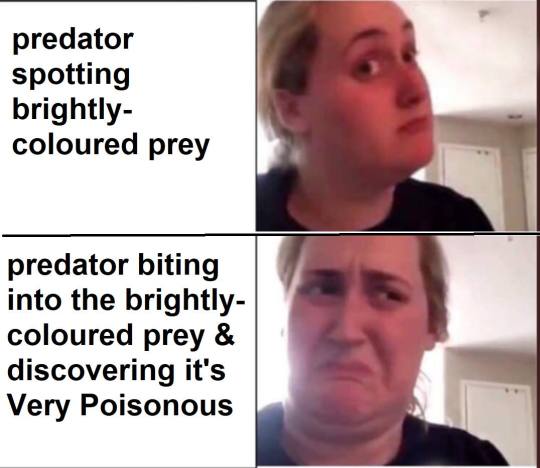
Aposematism is when a poisonous or otherwise gross/ dangerous/ unprofitable species uses pretty, bright colours (or some other noticeable signal) to warn predators “Do Not Eat!”
Unfortunately, many predators are not born knowing this, so they generally have to learn through trying something new and having a very unpleasant experience!
AKA: aposematism (usually) relies on predator learning!
#aposematism#biology meme#science meme#biology#science#sciblr#wild green memes for ecological fiends#behavioural ecology#predator learning#there are SOME species that are innately wary of bright prey#but that's generally believed to be a minority#over and over naive predators show no fear of an aposematic species until AFTER it has had a bad experience
256 notes
·
View notes
Text
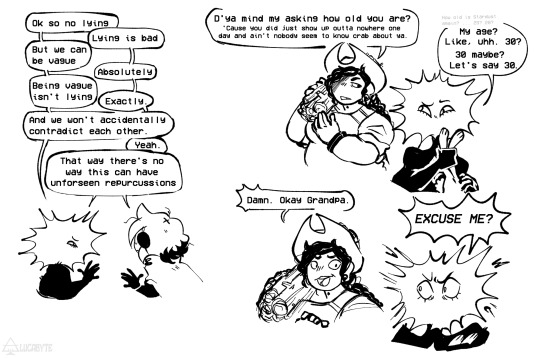
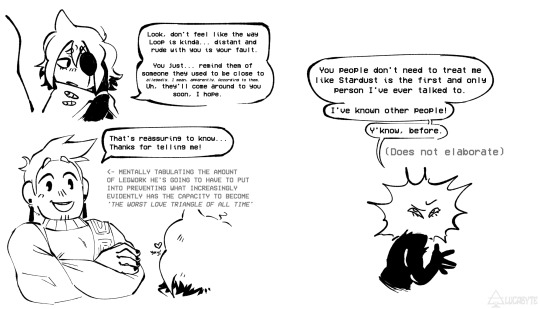

i feel like people are sleeping on the occam's razor situation of how buckwild it is to outright accuse a guy of being a clone of your friend even if you DO have a lot of circumstantial evidence. there's other options is what im saying. they could just be like. a guy. that's a sensible deduction. you should explore that deduction. ignore my shirt that reads I <3 RED HERRINGS.
i still think odile has the correct theory on lock but she's smart enough to know it needs like... a real smoking gun to be able to bring it up without sounding insane.
anyway. (mirabelle voice) i know its rude to speculate but has anyone else noticed the grieving? they seem to be grieving. does anyone have any thoughts on the grieving? i have some thoughts on the grieving.
#[isabeau voice] am i insane or does sometimes loop talk like they might have killed their whole family. is that just me? just checking.#nille design highly inspired by @kiwibrain's since its the one that imprinted in my mind. liberties taken since i didnt look @ reference#anyway i have a lot more thoughts on this? i guess ill hide them in the tags...? scroll down i suppose.#isat#in stars and time#isat spoilers#in stars and time spoilers#isat act 6 spoilers#isat loop#isat siffrin#isat bonnie#isat nille#isat fanart#in stars and time fanart#doodlebyte#----------------------------------------------------------------------#anyway the extra thoughts. are literally just my general thoughts on postcanon. (and thus are the context for all of my postcanon doodles!)#which is i think nille joins the party before loop reappears for a start (either from a period of nonexistence or just wandering around)#and that like. i think the party should be able to integrate loop as a completely new person. because they are! the secrecy isn't great but#They and Siffrin shuffle into different ecological niches in the party (eg. i think sif is more squeamish after it all but loop isnt)#and while it's not *exactly* what Loop wanted they get that beggars can't be choosers. and its pretty good#(i am glossing over how i think loop's reappearence drags both them and siffrin into a massive behavioural backslide and is likely a bit#distressing to watch go down. cycle of argument -> lovebombing -> normalcy -> repeat. etc etc. but since they are no longer literally#stewing in the worst pressure cooker of all time they do resolve it via productive conversation on their own time. its fine)#the party well-meaningly tries to deduce things from loop's vagueries and are able to pin down the DEAD FAMILY vibe pretty quickly.#but eventually the question of their prior identity falls by the wayside because well! they're just their friend loop! (also change belief)#as for how The Truth Come Out... this is what i mean by The Isabeau Torment Nexus(tm). which is that i think... isiloop should almost occur#BEFORE isabeau knows who loop is. he's just genuinely charmed by them eventually and tries to close the open end of the polycule#which FREAKS LOOP THE FUCK OUT because thats just too genuinely sick and wrong. and obviously w emotions high its not a great confrontation#ANYWAY told u i had more thoughts. if i were normal itd be a text post but.
699 notes
·
View notes
Text
52 notes
·
View notes
Text
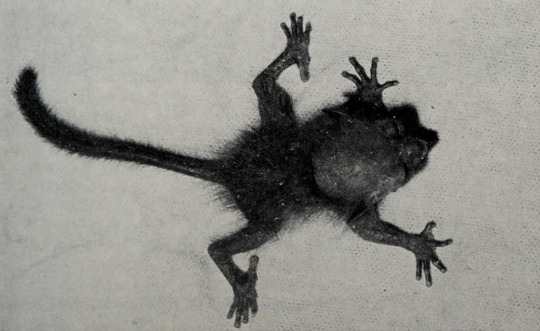
Demidoff's galago
By: A. R. Devez
From: Behaviour and Ecology of Nocturnal Prosimians
1972
#demidoff's galago#galago#primate#mammal#1972#1970s#A. R. Devez#Behaviour and Ecology of Nocturnal Prosimians
97 notes
·
View notes
Text
Madagascar, Lemurs, OneHealth.......a Masters? 🏝️🐒🔭🎓(U9)
Hey friends, its been a while and I’m glad you’re here!
This weeks’ prompt encourages us to share something about nature that gets us excited and ooooooooooooooooh am I excited! Like I’ve mentioned before, I’m a 4th year zoology student which 1) means I know a lot of cool animal stuff (ask me questions!), and 2) it’s almost time for me to graduate!
So today I’d like to talk about my current Masters application and the really cool OneHealth conservation research I have done (and hope to do again) in Madagascar!

Over the summer I got the opportunity to take the One Health Approach to Conservation Field school where we were taught zoological, ecological, and anthropological approaches to conservation issues in Madagascar’s rainforest and unique dry deciduous forest within Ankarafantsika National Park (Picture a rainforest but take away the rain, the biggest animal is the same kind of lemur as Zoboomafoo, and also the soil is like sand!!). While I won’t go into too much detail about most of the field work we practiced, like tree identification, phrenology, and size measurements, participant-observation sessions in tree-planting, rice harvesting, and a local village classroom, and of course-tent living and consistent rice and beans eating, I willllllllllll go into detail about the lemurs, cause oh so much do I love those little guys.
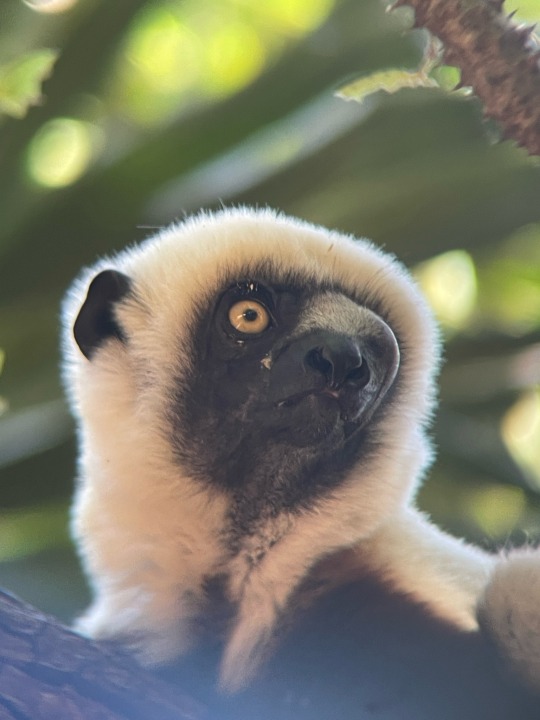



(1. Male with eye tumor/injury, 2. me with two mothers (if you look close you can see 2 baby heads!), 3. me taking leaf samples to make a dry-season Tree ID sketch, 4. my luxurious living quarters for the month.)
Our instructions were to do both focal and scan sampling, but my absolute favourite part of the trip was following the lemur groups and trying to identify the specific individuals while they were either chilling in our camp or being extremely chaotic in the forest.
During these observations, not once but twice did I witness 2 separate groups have lemurs literally try to kill an individual from the other group... and so when asking about this to my professor, the general conclusion we came to after he told me he’s never seen such violence despite coming to the park for years, was that the increased forest fragmentation (deforestation making the forest into sections rather than one continuous space) might be forcing groups that should be far apart into sharing the same spaces, causing fights for space, food, etc.
This species of lemur (Coquerel’s sifaka) is critically endangered and is a huge sense of pride for the indigenous people of Madagascar. Many of the parks residents follow taboos that forbid lemur hunting and consumption to protect these creatures. Unfortunately, its possible that either the past or current farming practices of some of them are negatively affecting lemurs, potentially without realizing. Not only does this become an anthropological issue, but if true, is a logistical problem best answered with knowledge of the lemurs behaviour, spatial and abundance knowledge on the plants used for food and shelter by both lemurs and people, and of course interviewing, participating in, and potentially educating and being educated by the residents to get a proper understanding of how to tackle this problem.
And so that’s the general gist of what I’ll be diving deeper into for my Masters, wish me luck!
[My friends video of one of the violent interactions (I know it looks like they are hugging but they have giant teeth with a strong bite force, are the size of toddlers, and it didn't give up until it thought the other was practically dead), the lemur that didn't run away was left with a bleeding head and injured arm but we think she survived!]
#Madagascar#Ankarafantsika National Park#OneHealth#Zoology#Ecology#Anthropology#Sifaka#Coquerels sifaka#lemurs#field work#conservation#envs 3000#science communication#behaviour research
11 notes
·
View notes
Text
Finally got into teaching!
#teaching as in helping the professor run undergrad classes and marking exams ect.#i'll hopefully be helping with ecology and animal behaviour unit
26 notes
·
View notes
Text
I have a presentation on both Tuesday and Wednesday 🥲
#i hate presenting my knowledge in ecology cus ive only studied human behaviour before this and everyone else is bio majors#im the ONLY psyc student in that class#im excited for my memory presentation tho cus i really like the info ive collected im just worried cus we do a q&a after
7 notes
·
View notes
Text
Fire 101
Chapter 1: Fire: whas all this then?
Fire ecologists have to know a bit about fire behaviour and regime to understand its impact on the ecosystem.
Fire behaviour relates to the movement, spread, speed, height, and intensity (temperature) of an individual fire.
Knowing this is important because it explains how impactful that fire will be, and helps us predict what might occur in future fires.
Behaviour is affected by:
Weather - rain or moisture will impede fire - it must be dry. Wind provides oxygen and directional push, which causes fire to move fast.
Vegetation - veg is fuel, the more fuel available (dead, dry, especially built up on the ground surface) the more fire can be generated. The type and structure of vegetation matters, but I will go into details of that in future posts!
Land - topography is important. Fire runs faster uphill because of the way flames move, it's more windy, and the vegetation is drier. This is why building a cute little house at the top of a hill in a gorgeous forest is... not a good idea. Fire will run slower at the bottom of a hill or by creek lines (assuming they're wet). Roads, paths, and fire breaks (intentional cleared paths on properties and in gov-managed land that contain no vegetation) are barriers to fire - fire can only move where there is something to consume. However, if the fire is intense enough, it will throw off embers that float over boundaries and create spot fires - which can grow into a big fire.
These factors are the core elements that affect fire behaviour, how a fire moves through and impacts an ecosystem.
Fire in sparse, open vegetation, with little build-up of dead materials, on a cool spring day with no wind, surrounded by roads? Probably won't be very impactful, might just trickle along at the surface level and burn itself out.
Fire in a closed-canopy forest with a thick layer of dry leaf litter and a dense understory on a hot and windy day, in a national park which spans thousands of square kilometres? That's gunna be an extremely hot, fast moving, and severe fire that will be almost impossible for fire-fighters to tackle.
There's your crash course in the absolute basics of fire behaviour.
Next up, Chapter 2: Fire regime!
#fire#fire ecology#plants#botany#science#plant science#flora#australia#bushfire#wildfire#fire behaviour#op
2 notes
·
View notes
Text
A rodent that lives on the plains of Inner Mongolia fells tall grasses so that it can scan the skies for flying predators, a study involving experts from the University of Exeter has found.
The practice by Brandt’s voles also means that shrikes, a type of carnivorous bird, are denied handy perches and places to use as larders for their prey, the study discovered.
Scientists from Exeter and universities in China and the US have established that the voles cut tall bunchgrass when shrikes, also known as butcher birds, were nearby. The voles do not eat the bunchgrass, but were observed to manage it as a means of self-preservation, an example of “ecosystem engineering”.
“When shrikes were present, the voles dramatically decreased the volume of bunchgrass,” said Dirk Sanders of the Environment and Sustainability Institute at the university’s Penryn campus in Cornwall.
“This led to fewer visits from shrikes, which apparently recognise cut-grass areas as poor hunting grounds. An activity like this is costly for the voles in terms of energy so cutting the grass must significantly improve their chances of survival.”
The voles attack the bottom parts of the stem and leaves and dropped them on the ground. They also dig burrows that lead to the roots being cut.
Researchers tested the impact of keeping the predators away by putting up nets over certain areas. With no shrikes overhead, the voles stopped cutting the bunchgrass.
Other examples of ecosystem engineering include elephants opening up areas of African savanna and fish off the Catalan coast reducing the canopy height of seagrass, but these make areas safer for other species rather than their own.
Shrikes often perch on the branches and stems of shrubs and tall grasses to search for prey such as voles and large insects. They store their food by impaling their prey on a thorn or a stem, as if storing food on a meat hook.
“We sometimes underestimate the ability of wild animals to react to changes in their environment,” Sanders said. “In this case, the voles were able to change their behaviour in response to the removal of predators.
“Our findings are a reminder that species show remarkable adaptations. It also underlines that the loss of even a single species in a food web can result in unexpected changes to an entire habitat.”
3 notes
·
View notes
Text
Scientists have known for centuries that the moon alters Earth’s ecosystems through gravity. As it spins around our planet, warping space-time, the moon contributes to a complex contortion of the oceans, producing twin bulges we call the tides. In turn, the daily marriage and separation of land and sea transforms the topography of numerous species’ homes and the access they have to food, shelter, and each other.
The moon also stabilizes Earth’s climate. Earth does not have perfect posture; it is tilted along its polar axis, circling the sun at an angle of about 23 degrees. The moon acts as an anchor, preventing the Earth from varying its axial tilt by more than a degree or two. Without the moon, our planet would likely wobble about like a dreidel, tilting a full 10 degrees every 10,000 years, and possibly oscillating the global climate between ice ages and hellish heat the likes of which no species has ever endured.
What is becoming increasingly clear, however, is that the moon also influences life in a more surprising and subtle way: with its light. Most organisms possess an array of genetically encoded biological clocks that coordinate internal physiology and anticipate rhythmic changes in the environment. These clocks are wound by various environmental cues known as zeitgebers (time givers), such as light and temperature. Sunlight is the best-studied zeitgeber, but it turns out that for many aquatic creatures, moonlight is just as crucial. In the past few years, scientists have rekindled a long-neglected curiosity about the moon’s power to manipulate life, reviving studies on biology’s secret moon clocks.
— The Lunar Sea
#ferris jabr#the lunar sea#science#biology#marine biology#human biology#animals#animal behaviour#genetics#astronomy#ecology#meteorology#climatology#earth#sun#moon#light#tides#zeitgebers#circadian rhythm
5 notes
·
View notes
Text
I was trying to understand the whole idea of "fear ecology", where presence of predators = a ton of behavioural and psychological changes in prey animals, even if they're not hunting (so for example, a non-hunting outdoor cat lowers foraging + reproductive success among mice) and it seemed extreme until the next day when I realized thats just me when my boss is in at work.
#-_- not proud of that one but its pretty funny#authority figures are my natural predator unforch#animal friends
10K notes
·
View notes
Text
Birdscapes: A Pop-up Celebration of Bird Songs in Stereo Sound :: Miyoko Chu with The Cornell Lab Of Ornithology
Birdscapes: A Pop-up Celebration of Bird Songs in Stereo Sound :: Miyoko Chu with The Cornell Lab Of Ornithology

View On WordPress
#978-0-8118-6428-2#arctic tundra#bird behaviour#bird courtship#bird ecology#bird flight#bird migration#birds feeding#books by miyoko chu with the cornell lab of ornithology#camouflage#colour birds#cypress swamp#eastern deciduous forest#fledging birds#grasslands#julia hargreaves#mating#nesting birds#pacific rain forest#pacific seabird colony#sonoran desert
0 notes
Text
2 notes
·
View notes
Text
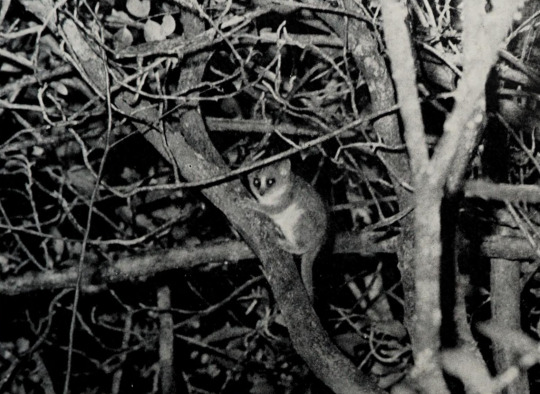
Gray mouse lemur
By: Unknown photographer
From: Behaviour and Ecology of Nocturnal Prosimians
1972
#gray mouse lemur#mouse lemur#primate#mammal#1972#1970s#Behaviour and Ecology of Nocturnal Prosimians
26 notes
·
View notes
Photo





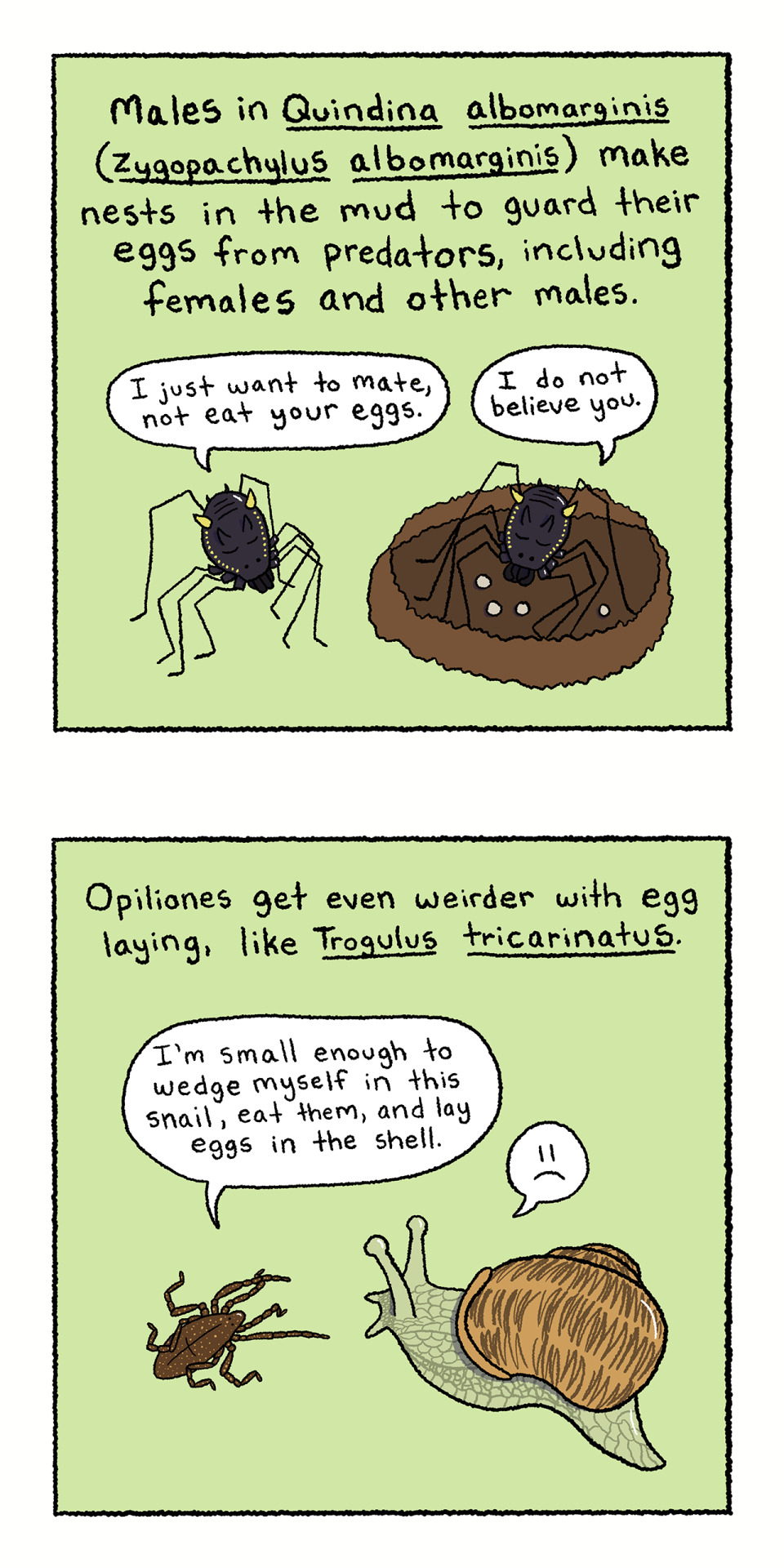
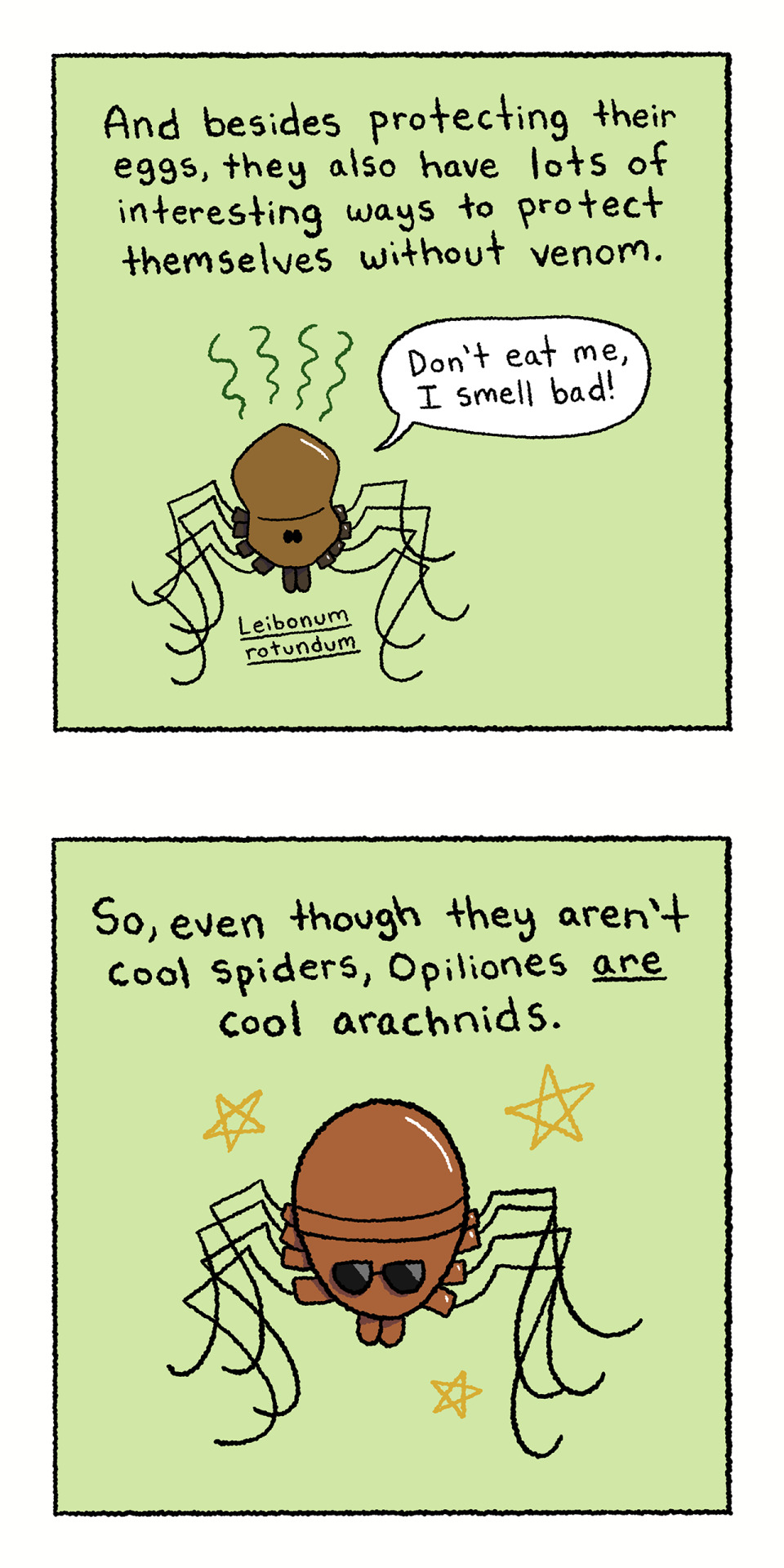
References:
Dunlop, J. A., Anderson, L. I., Kerp, H., & Hass, H. (2003). Preserved organs of Devonian harvestmen. Nature, 425(6961), 916–916. https://doi.org/10.1038/425916a
Machado, G., & Raimundo, R. L. G. (2001). Parental investment and the evolution of subsocial behaviour in harvestmen (Arachnida Opiliones). Ethology Ecology & Evolution, 13(2), 133–150. https://doi.org/10.1080/08927014.2001.9522780
Martens, J. (1993). Further cases of paternal care in Opiliones (Arachnida). Tropical Zoology, 6(1), 97–107. https://doi.org/10.1080/03946975.1993.10539212
Mora, G. (1990). Paternal care in a neotropical harvestman, Zygopachylus albomarginis (Arachnida, Opiliones: Gonyleptidae). Animal Behaviour, 39, 582-593.
Nazareth, T. M., & Machado, G. (2009). Reproductive behavior of Chavesincola inexpectabilis (Opiliones, Gonyleptidae) with description of a new and independently evolved case of paternal care in harvestmen. Journal of Arachnology, 37(2), 127–134. https://doi.org/10.1636/ST08-32.1
Shear, W. (2009). Harvestmen: Opiliones—Which include daddy-long-legs—Are as exotic as they are familiar. American Scientist, 97(6), 468-475.
#bugblr#bug art#harvestmen#comic#bugs#daddy long legs#arachnids#arachnology#science#science comic#educational comic#invert#invertebrate#snail#opiliones#outside bones
15K notes
·
View notes
Text

Raths mate for life. Their behaviour is very similar to eagle behaviour as they return to the same nest every year and build it up each time as a sign of their loyalty and vitality. They mate through graceful aerial displays and acrobatics and both take part in rearing their chicks. They use their flames to incubate the eggs.
Raths can breed all year, but they usually like to raise their young at the warmest times of year. Rathian will lay up to four eggs at a time and she will become especially aggressive to intruders in her territory during this time. Rathian in general are the more aggressive of the two and she tends to grow slightly larger than the Rathalos. Rathian often have to compete for a male, which leads to further aggression, but once she and her Rathalos have bonded, they will stay together forever. They’re very tender with each other and their chicks. They preen one another’s scales, fly together and hunt cooperatively.
#「 Headcanon ♔ ♕ ┊ King and Queen 」#[ pls read this in a david attenborough voice jhfjkdg ]#[ but what I love about MH is that they're really just animals that you study#each monster has their own unique behaviours and ecology#it makes them super interesting#and I love when fictional dragon behaviour is taken from real birds and animals ]#[ I love dragons man ]
0 notes